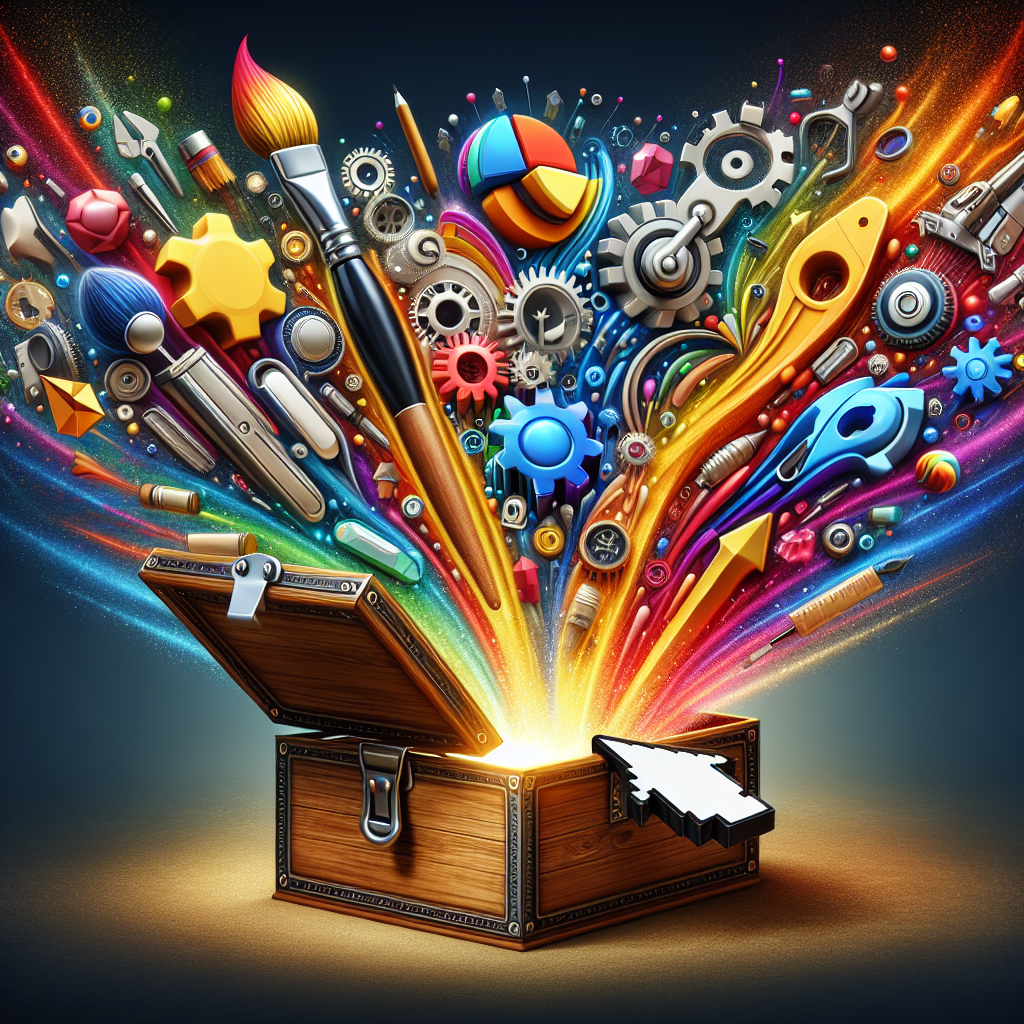Introduction to Creative Design Tools
In the fast-evolving world of digital art and visual communication, creative design tools have become essential for professionals and hobbyists alike. Whether you are a graphic designer, UX/UI specialist, or content creator, the importance of utilizing innovative software and platforms cannot be overstated. This guide will explore examples of creative design tools, highlight their unique features, and reveal how these resources empower users to bring their imaginative ideas to life.
Why Use Creative Design Tools?
Creative design tools facilitate the transformation of ideas into visual masterpieces. By leveraging user-friendly interfaces and powerful functionalities, these tools help streamline the design process, improve collaboration, and enhance productivity. Whether crafting vector illustrations, editing photos, or prototyping apps, digital design software gives creators the freedom to experiment and iterate quickly.
- Boosts productivity and efficiency
- Enables creative exploration
- Improves collaboration among teams
- Provides access to vast asset libraries and templates
Popular Examples of Creative Design Tools
Below are some of the most widely used creative tools for designers that cater to a range of needs, from graphic design to animation and prototyping:
1. Adobe Creative Cloud
This industry-leading suite offers applications like Photoshop, Illustrator, and After Effects. Ideal for graphic design inspiration, photo editing, video production, and more, Adobe’s tools are favored for their versatility and robust feature set.
2. Figma
Figma is a cloud-based interface design tool popular for collaborative design workflows. Its real-time editing and prototyping capabilities make it a go-to choice for teams working on UX/UI projects.
3. Canva
Canva stands out as an accessible online design platform for beginners and professionals. With drag-and-drop functionality and an extensive template library, it simplifies the process of creating social media graphics, presentations, and marketing materials.
Other Notable Mentions
- Sketch – Intuitive vector-based design for macOS
- Procreate – Digital painting app for illustrators
- Affinity Designer – Affordable alternative for vector graphics
- Blender – Open-source 3D modeling and animation tool
- InVision – Prototyping and collaboration platform
Key Features of Modern Creative Design Tools
The evolution of creative software has introduced a range of advanced functionalities that shape the modern design landscape. When evaluating powerful design tools, consider the following features:
- Intuitive User Interface: Simplifies the learning curve and accelerates the creative process.
- Real-time Collaboration: Multiple users can work simultaneously, streamlining feedback and revisions.
- Cloud Storage and Sync: Access projects from any device, promoting flexibility and remote work.
- Asset Libraries: Thousands of templates, icons, and stock photos are readily available for faster creation.
- Extensive Export Options: Supports a variety of formats, including SVG, PNG, PDF, and more.
- Plugin and Integration Support: Expands functionality by connecting with other productivity tools.
- AI-Powered Features: Smart suggestions, automated adjustments, and generative design elements.
Enhancing Workflow with Design Platforms
The best creative design apps do more than just provide a canvas—they optimize every stage of the workflow. Designers can benefit from:
- Version Control: Keeps track of changes and allows easy rollback to previous iterations.
- Team Libraries: Facilitates the sharing of assets, colors, and styles for brand consistency.
- Integrated Feedback: Stakeholders can leave comments directly on designs, speeding up approvals.
- Automated Export: Rapidly generates assets for web, print, or mobile development.
Emerging Trends in Creative Design Technology
Staying ahead in design means keeping up with the latest trends. Here are some current directions shaping the industry:
- Artificial Intelligence: AI-driven tools now offer layout suggestions, auto-coloring, and content generation, reducing manual effort.
- Augmented and Virtual Reality: Immersive design experiences are expanding possibilities for product visualization and user interaction.
- Cross-platform Compatibility: Designers expect seamless experiences whether on desktop, tablet, or mobile platforms.
- Accessible Design: Tools are focusing on inclusive features, ensuring designs are usable by people with diverse abilities.
- Remote Collaboration: The shift to distributed teams demands robust online collaboration capabilities.
Conclusion: Empower Your Creativity
The landscape of creative design tools continues to evolve, offering endless opportunities for innovation and expression. By leveraging the right software, you can streamline your workflow, foster collaboration, and consistently deliver impactful visual content. Whether you’re an experienced designer or just starting out, exploring the latest tools and trends will help you stay ahead and unlock your full creative potential.

0 responses to “Unlocking Creativity: Top Examples of Creative Design Tools for Innovators”